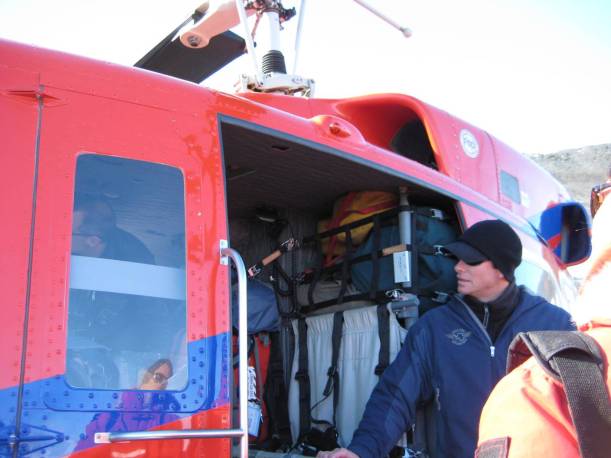
A small group of emperor penguins molting; White Island in the background
Emperor penguins (Aptenodytes forsteri) are the most well-known penguins living in Antarctica– they star in March of the Penguins and are one of the continent’s best examples of adaptation to its extreme environment. They are the largest species of penguin, reaching up to 122 cm (48 inches) tall and weighing from 22-45 kg (49-99 lb), although they weigh only 11 ounces at birth. During the rearing of their young, males and females lose weight because they are incubating eggs and caring for their offspring instead of feeding themselves– in fact, males lose an average of 15 kg (33 lb)– almost 40% of their body weight! Males will fast for 4 months while the females are out foraging for food (Williams 1995); when females return to take over caring for the newly hatched chick, males travel up to 100 km across the ice before they reach water, where they can finally find their food. There are many risks to a young penguin, and fewer than 20% survive their first year (Williams 1995).
When penguins molt, their new feathers coming in are not initially waterproof, so the penguins cannot swim until the feathers have gained their waterproof coating. During this time, since they are unable to hunt for food, they must conserve energy, and they become quiescent for weeks on end. They do not move even when people are nearby. During our stay at McMurdo, four emperor penguins found their way to the road near Pegasus, the landing strip, and stationed themselves there during their molt. Because they were just off the road, we could see them closely when driving by. Of course, we are still not allowed to approach them, and must maintain a distance great enough that they hardly notice us. Fortunately, I have a nice zoom lens!

Emperors molting (you can see white feathers coming out of their bodies as they are replaced by new ones)
Continue reading →





